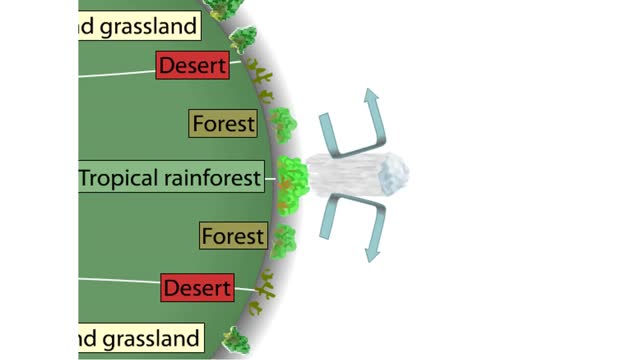Search Results
Results for: 'p type wafer'
By: HWC, Views: 10245
Here are the molecular structures of three simple sugars: glucose, ribose, and fructose. Look at these simple sugars and identify what characteristics they all share. As you can see, all of the carbohydrates have carbon, hydrogen, and oxygen in a ratio of 1:2:1 and there is always a double bo...
SNP Polymorphysim Microarray Chip - How to Test a Person's DNA
By: HWC, Views: 9880
To test a person's DNA, a researcher first needs a source of tissue. Most of the cells in a blood sample are red blood cells, which lack nuclei, but there are also a number of white blood cells, which do contain nuclei and chromosomal DNA. If we could see a particular DNA sequence in these cel...
Four Giant Convection Cells oF Earth
By: HWC, Views: 9759
Earth Has Four Giant Convection Cells Earth's climates range from dry and cold at the poles to wet and warm at the equator. These climates are dictated largely by the amount of solar radiation that a region receives. Solar radiation warms the Earth and the surrounding air, setting up convection c...
Attention Deficit Disorder (ADD)
By: Administrator, Views: 13781
Attention deficit hyperactivity disorder (ADHD) is a mental disorder of the neurodevelopmental type. It is characterized by difficulty paying attention, excessive activity, and behavior without regards to consequences which is not appropriate for a person's age. There are also often problems with...
Photosynthesis and Van Helmont Experiment
By: HWC, Views: 9713
All energy on Earth comes from a star, the Sun. Light must travel 160 million kilometers to reach Earth where plants capture this light energy and convert it to chemical energy in the form of sugars. This biochemical process is called PHOTOSYNTHESIS. The summary equation for photosynthesis is ...
What are Taste Receptors? How Does it Work? Animation
By: HWC, Views: 7387
Do you ever wonder how you can taste the foods you eat? It all starts with taste receptors in your muscular tongue. Taste receptor neurons are found in your taste buds but you are not looking at the taste buds. The raised bumps on the surface of the tongue that you see are specialized epith...
By: Administrator, Views: 13927
A photoreceptor cell is a specialized type of neuroepithelial cell found in the retina that is capable of visual phototransduction. The great biological importance of photoreceptors is that they convert light (visible electromagnetic radiation) into signals that can stimulate biological processes...
What are the Parts of a Plant Cell?
By: HWC, Views: 9437
Every chloroplast in a plant cell is packed with stacks of flattened sacs called thylakoids. The thylakoid membranes contain chlorophyll, as well as most of the other components required for the light reactions of photosynthesis. The chlorophyll-containing structures within the membranes are c...
Components of the Nervous System
By: Administrator, Views: 506
The nervous system is the part of an animal that coordinates its actions by transmitting signals to and from different parts of its body. The nervous system detects environmental changes that impact the body, then works in tandem with the endocrine system to respond to such events. Nervous tissue...
Advertisement











